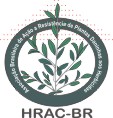HERBICIDES TO CONGO SIGNAL GRASS SUPPRESSION IN INTERCROPPING WITH CORN
Resumo
The corn intercropping with Congo signal grass (Brachiaria ruziziensis) has rapidly raised in South and Center-West of Brazil. However, the uncertainty about forage interference on corn yield has led growers to use herbicides to suppress Congo signal grass. Our objective was to evaluate herbicide treatments in sub-doses in suppression of Congo signal grass growth in a corn/Congo signal grass system intercropping. A greenhouse experiment was conducted to evaluate forage intoxication by herbicides to select the best treatments. Subsequently, a field experiment was conducted to investigate the suppression of some sub-dose herbicide treatments based on corn yield and Congo signal grass growing in two stages of application. The experimental arrangement was a 9x2+3 factorial in a randomized block design, with eight replications. Treatments applied in more than 3 tillers of Congo signal grass demonstrated less injury levels than 1 tiller stage. In the field, forage intoxication was not higher than 56% and nicosulfuron treatments provided higher suppression levels than mesotrione treatments. Based on avoiding corn yield losses of 25% and on greater Congo signal grass biomass on off-season, we could conclude that mesotrione (48 or 60 g ha-1) and atrazine (1200 g ha-1) applied on 1-3 tiller stage; and mesotrione (60 g ha-1), mesotrione+atrazine (60+1200 g ha-1) and atrazine (1200 g ha-1) applied on more than 3 tillers are efficient treatments.
Palavras-chave
DOI: https://doi.org/10.7824/rbh.v1i1.736
Apontamentos
- Não há apontamentos.
ISSN (IMPRESSO de 2000 a 2005) 1517-9443
Complexo Empresarial Oscar Fuganti
Rua Santa Catarina, 50 - 13º andar - sala 1302
Londrina - Paraná
CEP: 86010-470
Email: contato@rbherbicidas.com.br
TEL: (43) 3344-3364
Segunda à Sexta — 12:00 às 18:0











